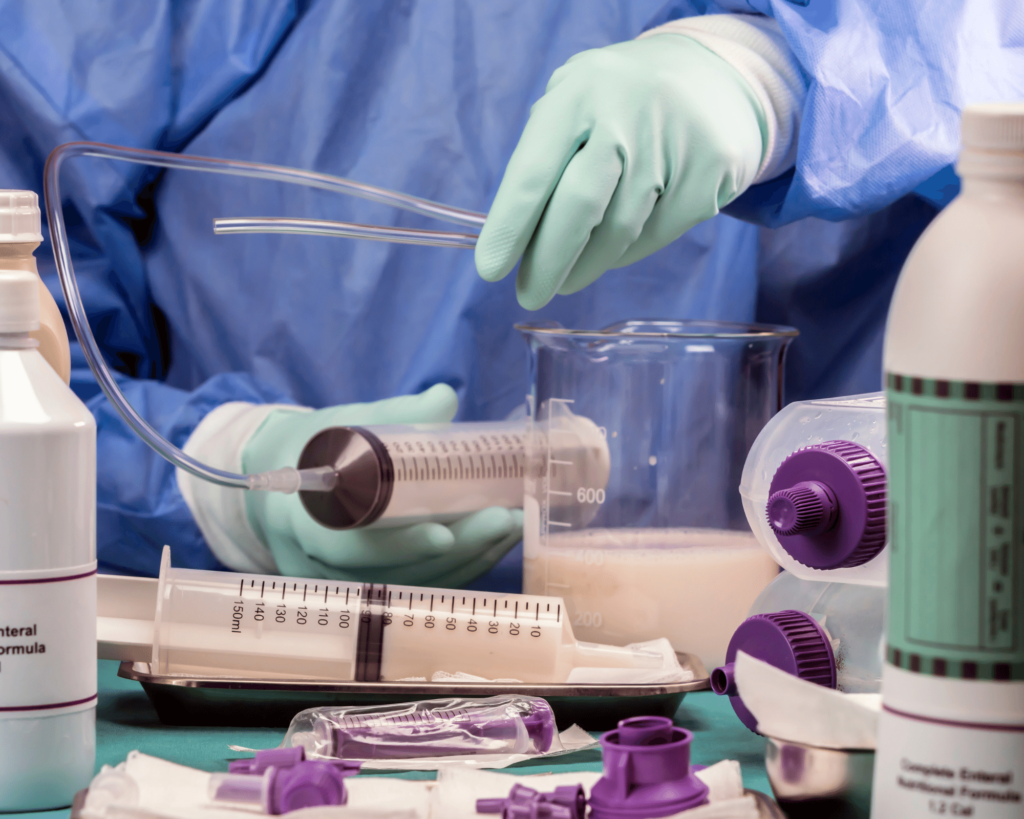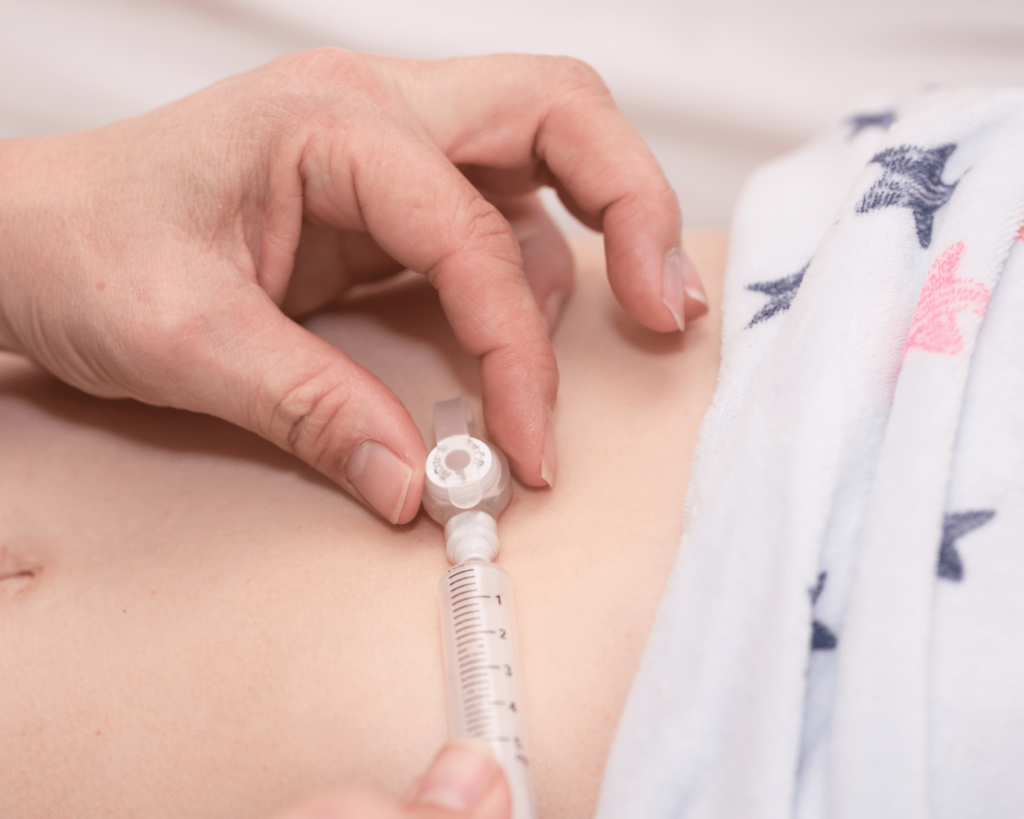Our bodies need proteins, fats, carbohydrates, vitamins andtrace elements to function properly. However, certain pathologies or clinical situations can lead to an inability to eat naturally. In these circumstances, artificial feeding is usually prescribed to avoid undernutrition. This can take the form of enteral nutrition via a nasogastric or nasoduodenal tube, a gastrostomy or a jejunostomy. These medical devices can be used to supplement or replace food taken orally to provide patients with basic nutritional requirements.
What are our basic nutritional needs?
The nutritional requirements of a standard individual engaged in moderate physical activity are as follows
- 25 to 35 kcal/kg/day;
- at least 1g/kg/day of protein;
- at least 200g/day of carbohydrates;
- 25-40 ml/kg/day of water.
However, these daily requirements are increased in critical or clinical situations:
- + 10% in the classical postoperative period without severity;
- + 10% to 30% for severe trauma;
- + 25% to 60% for severe infection;
- + 50% to double for extensive and deep burns, or pancreatitis.
How common is undernutrition in hospitals?
Involuntary weight loss is relatively common in hospital. 50% of hospitalised patients suffer from undernutrition. In addition, hospitalisation aggravates initial deficiencies related to an underlying pathology such as cancer, chronic renal failure, COPD (emphysema), or chronic liver disease.
How to detect undernourishment?
Weight loss becomes a concern when :
- it is more than 10% in the last month;
- BMI (weight/height2 ) is less than 18.5 in adults.
The severity of undernutrition is also assessed by :
- its speed of onset (sudden weight loss);
- its importance, a sudden loss of 25% or a chronic loss of 50% is life threatening;
- biological parameters (e.g. PINI, Prognostic Inflammatory and Nutrional Index).



What is the purpose of enteral nutrition?
Enteral nutrition is an artificial feeding technique designed to deliver nutrients through a tube passed through the nose or directly into the stomach or intestine.
It is indicated when the digestive tract is functioning properly and is still able to absorb nutrients. Enteral nutrition is the first method of artificial feeding that can be used. It allows a large part of the digestive system to continue to be used, as digestion then takes place normally from the stomach or intestine.
In addition, it contributes to a better assimilation of nutrients and better immune defences. With this method, a single type of solution can provide both macros and micronutrients.
Prescribing and monitoring artificial nutrition requires the involvement of physicians, pharmacists, nutrition unit members, dieticians, and nursing staff.
What is parenteral nutrition?
When natural feeding is no longer possible and, in addition, the digestive tract is damaged, parenteral nutrition is used to administer nutritional support. The term parenteral translates as : The term parenteral translates as "passing by the digestive tract". With this technique, the nutrients do not pass through the digestive tract, but immediately into the bloodstream (subclavian or internal jugular vein). The administered solution must therefore be carefully controlled. Among other things, the amount of amino acids must be monitored to avoid excessive osmolarity, which could sclerotize the venous system.
Enteral feeding is more physiological, as it maintains digestive function and involves minimal potential complications. Parenteral nutrition only exists when enteral nutrition is contraindicated.
What are the contraindications to enteral feeding?
This type of nutritional management is contraindicated in cases of :
- gastroparesis ;
- digestive ischemia or fistula;
- severe malabsorption ;
- occlusion, obstruction, ileus...
Which solutions are given enteral?
Most often, standard or so-called polymeric solutions are used, i.e. nutrients in their native form. The mixtures contain undegraded carbohydrates, fats and proteins. Generally, these solutions are iso-caloric, i.e. they contain 1 kcal per millilitre of product. In addition, they are often enriched with fibre to maintain the intestinal flora and to protect the digestive flora. They are also regularly free of lactose, as this carbohydrate is often poorly tolerated. However, there are more specific solutions.
Ultimately, enteral nutrition is indicated as a means of "survival" to compensate for a defective diet. The patient can thus regain his strength diminished by malnutrition and recover a tolerable daily and social life. Because a nourished body is a body that feels better, and a body that feels better is a mind that is at peace.
Sources :
Basics for IADE students by Doctor B. Leroy (surgical resuscitation Hopital Huriez).
https://www.sfncm.org/images/stories/EPP/NE/EPP-NE_presentation_03_03.pdf



